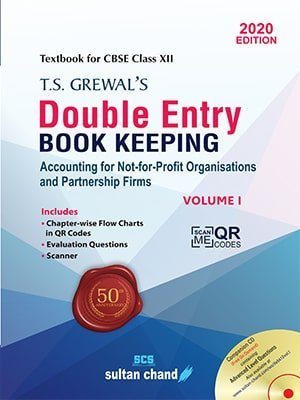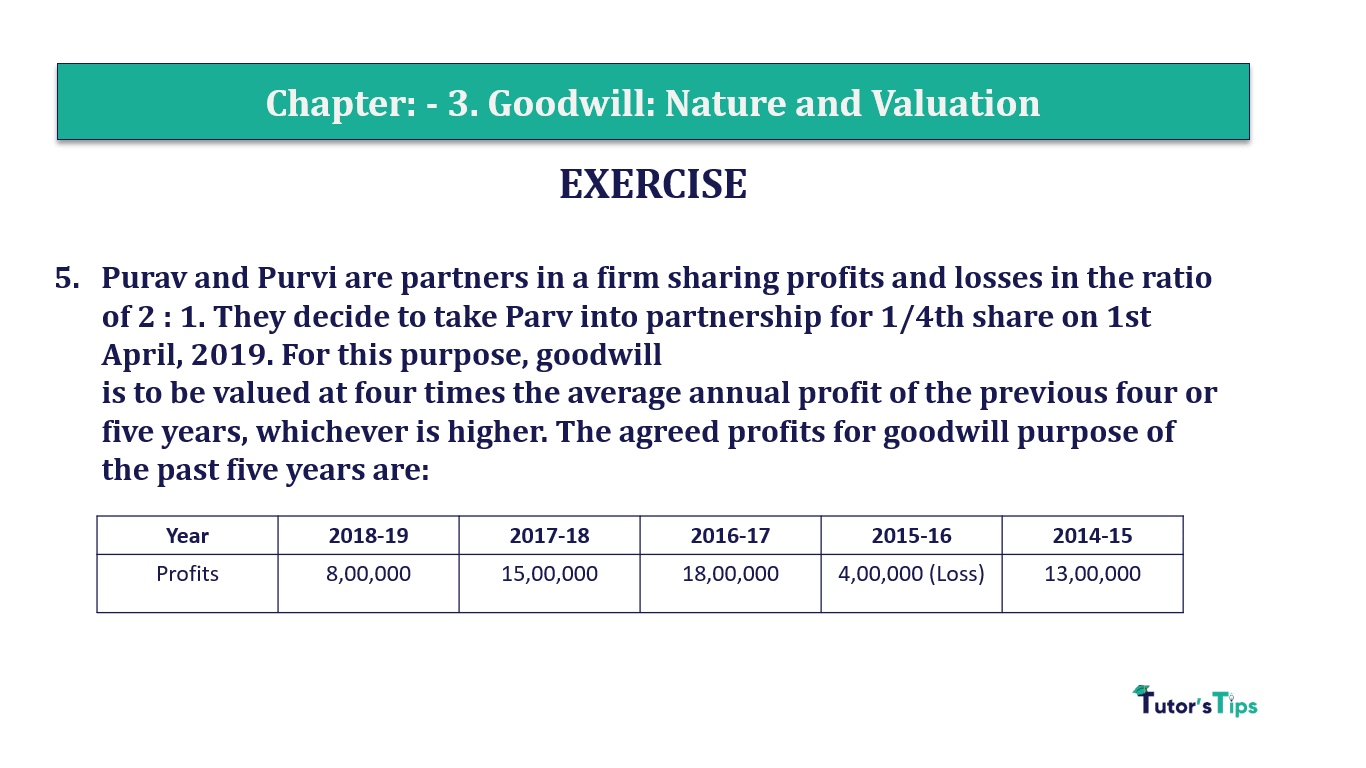Question 38 Chapter 6 of +2-A
38. A, B, and C are partners sharing profits and losses in the ratio of 4 : 3 : 3. Their Balance Sheet as of 31st March 2019 is:
| Liabilities | Amount | Assets | Amount | ||
| Creditors | 7,000 | Land and Building | 36,000 | ||
| Bills Payable | 3,000 | Plant and Machinery | 28,000 | ||
| Reserves | 20,000 | Computer Printer | 8,000 | ||
| Capital A/cs: | Stock | 20,000 | |||
| A’s Capital | 32,000 | Sundry Debtors | 14,000 | ||
| B’s Capital | 24,000 | Less: Provision for Doubtful Debts | 2,000 | 12,000 | |
| C’s Capital | 20,000 | 76,000 | B’s Loan | 2,000 | |
| 1,06,000 | 1,06,000 | ||||
On 1st April 2019, B retired from the firm on the following terms:
- Goodwill of the firm is to be valued at 14,000.
- Stock, Land, and buildings are to be appreciated by 10%.
- Plant and Machinery and Computer Printer are to be reduced by 10%.
- Sundry Debtors are considered to be good.
- There is a liability of 2,000 for the payment of outstanding salary to the employees of the firm. This liability was not provided in the Balance Sheet but the same is to be recorded now.
- The amount payable to B is to be transferred to his Loan Account.
Prepare Revaluation Account, Partners’ Capital Accounts, and the Balance Sheet of A and C after B’s retirement.
The solution of Question 38 Chapter 6 of +2-A: –
| Revaluation Account |
|||||
| Particular |
Amount | Particular | Amount | ||
| To Plant and Machinery | 2,800 | By Stock A/c | 2,000 | ||
| 28,000 × 10% | (20,000 × 10%) | ||||
| To Electronic Typewriter | 800 | By Land and Building A/c | 3,600 | ||
| 8,000 × 10% | (36,000 × 10%) | ||||
| To Outstanding Salary |
2,000 | By Provision for Doubtful Debts A/c | 2,000 | ||
| To Profit transferred to | |||||
| A’s Capital A/c | 800 | ||||
| B’s Capital A/c | 600 | ||||
| C’s Capital A/c | 600 | 2,000 | |||
| 7,600 | 7,600 | ||||
| Partners’ Capital Account |
|||||||
| Part. | X | Y | Z |
Part. |
X | Y | Z |
| To B’s Capital A/c (Goodwill) | 1,200 | – | 600 | By Balance B/d | 32,000 | 24,000 | 20,000 |
| By Reserves A/c | 8,000 | 6,000 | 6,000 | ||||
| By Revaluation A/c | 800 | 600 | 600 | ||||
| To B’s Loan A/c | 34,800 | By A’s Capital A/c | – | 2,400 | – | ||
| To Balance c/d | 38,400 | – | 24,800 | By C’s Capital A/c | – | 1,800 | – |
| 40,800 | 34,800 | 26,600 | 40,800 | 34,800 | 26,600 | ||
| Balance Sheet |
|||||
| Liabilities |
Amount | Assets | Amount | ||
| Creditors | 7,000 | Land and Building | 39,600 | ||
| Bills Payable | 3,000 | (36,000 + 3,600) | |||
| Outstanding Salary | 2,000 | Plant and Machinery | 25,200 | ||
| (28,000 – 2,800) | |||||
| Electronic Typewriter | 7,200 | ||||
| (8,000 – 800) | |||||
| B’s Loan | 34,800 | Stock |
22,000 | ||
| Capital: | (20,000 + 2,000) | ||||
| A’s Capital | 38,400 | Sundry Debtors | 14,000 | ||
| C’s Capital | 24,800 | 41,200 | Bank | 2000 | |
| 1,10,000 | 1,10,000 | ||||
Working Note:-
Calculation of Gaining Ratio
Old Ratio of A, B and C= 4:3:3
B retires from the firm.
Gaining Ratio of A and C= 4:3 (Given)
Adjustment of Goodwill
Goodwill of the firm = Rs 14,000
| B’s Share of Goodwill | = | Firm’s Goodwill | X | B’s share |
| = | 14,000 | X | 3 | |
| 10 | ||||
| = | Rs 4,200 |
| A’s Share of Goodwill | = | B’s Goodwill | X | Gaining share of A |
| = | 4,200 | X | 4 | |
| 7 | ||||
| = | Rs 2,400 |
Advertisement-X
| C’s Share of Goodwill | = | B’s Goodwill | X | Gaining share of C |
| = | 4,200 | X | 3 | |
| 7 | ||||
| = | Rs 1,800 |
T.S. Grewal’s Double Entry Book Keeping +2 (Vol. I: Accounting for Not-for-Profit Organizations and Partnership Firms)
- Chapter No. 1 – Financial Statement of Not-For-Profit Organisations
- Chapter No. 2 – Accounting for Partnership Firms – Fundamentals
- Chapter No. 3 – Goodwill: Nature and Valuation
- Chapter No. 4 – Change in Profit-Sharing Ratio Among the Existing Partners
- Chapter No. 5 – Admission of a Partner
- Chapter No. 6 – Retirement/Death of a Partner
- Chapter No. 7 – Dissolution of a Partnership Firm
T.S. Grewal’s Double Entry Book Keeping (Vol. II: Accounting for Companies)
- Chapter No. 8 – Company Accounts – Accounting for Share Capital
- Chapter No. 9 – Company Accounts – Issue of Debentures
- Chapter No. 10 – Redemption of Debentures
T.S. Grewal’s Double Entry Book Keeping (Vol. II: Accounting for Companies)
- Chapter No. 1 – Financial Statements of a Company
- Chapter No. 2 – Financial Statement Analysis
- Chapter No. 3 – Tools of Financial Statement Analysis – Comparative Statements and Common- Size Statements
- Chapter No. 4 – Accounting Ratios
- Chapter No. 5 – Cash Flow Statement
Check out T.S. Grewal +2 Book 2020@ Official Website of Sultan Chand Publication








Leave a Reply